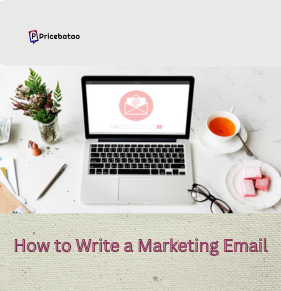GEO AEO is redefining online visibility because sole SEO does not cut it anymore. The online world is changing rapidly, and content creators as well as publishers need to conform to new tactics. Being in Google’s blue links at the top or any search engine result pages is not the end goal anymore. The actual challenge today is making sure content gets found and surfaced in answer engines powered by AI. This change heralds the emergence of Generative Engine Optimization (GEO), Answer Engine Optimization (AEO), and Generative Search Optimization (GSO).
GEO, AEO, GSO – What Do They Represent?

Why It Matters to Brands and Publishers
Whatever you name it, all these names refer to one thing: businesses and brands must structure their content so that AI spiders can interpret it. That way, their data will be part of the summaries AI applications generate. No matter if you have a publishing website, an online store, or a marketing platform, adapting to this shift is now becoming imperative.
As Tom Critchlow, EVP of Audience Growth at Raptive, puts it: “AI has already transformed what search is. It’s not just about the appearance of search, but also about the questions people ask and the responses they anticipate.”
Not at all. SEO is not going anywhere. It’s still too common and entrenched in online marketing. Instead, Generative Engine Optimization (GEO), AEO, or GSO is coming into play to assist SEO. Experts view it as an emerging priority, even if there are no set standards or an explicit playbook yet. But with how rapidly this field is evolving, that will soon be changing.
How GEO Differs From Traditional SEO
Traditional SEO has traditionally been concerned with placing websites higher in search engine listings for particular queries. Measurement of success rested primarily on click-through rates (CTR). GEO, AEO, or GSO is not like this. GEO, AEO, or GSO is concerned with making sure AI crawlers know enough about your content or brand to respond to more advanced, natural-language queries in AI-powered engines.
GSO is not about visibility, experts say; it’s about the way your brand looks in the AI-generated answer. Does the AI draw on your content? Does it point back to your website? Is your brand accurately represented in those answers? These are all new considerations businesses need to watch out for.
What Do AI Crawlers Look For
AI crawlers operate differently from orthodox search engine crawlers and continue to evolve. As noted by Cowell, search engines have had years to perfect their systems of crawling, whereas large language models (LLMs) and their crawlers are still relatively simplistic.
What this implies is that AI spiders frequently have problems accessing and reading from some websites. More and more debate surrounds how much work brands should do to make their content more “AI-friendly.” One test case in action is the adoption of LLMS.txt, in which a brand can feed raw website data directly into AI models to read—essentially the reverse of robots.txt, which informs search engines what not to crawl.
Optimizing for AI Engines versus Search Engines
How users interact with AI engines differs significantly from searching traditionally. Individuals don’t simply type in short, keyword-rich queries. Rather, they produce lengthy, descriptive prompts. Long-tail queries tend to need AI to produce a synthesized response more than simply linking to click on.
This is a problem for SEO specialists. Search engines aside, there aren’t yet any webmaster tools or analytics dashboards that indicate how content performs in AI search. Google doesn’t provide detailed information about AI Overviews, and even services like ChatGPT don’t report performance metrics. Consequently, marketers are effectively operating in the dark with very little insight into how AI engines are deploying their content.
Are There Any Workarounds?
Yes, but they are not perfect. Currently, marketers and publishers are experimenting with various ways to grasp how users pose questions that could affect AI-generated responses.
One real-world strategy, as proposed by Ellerton, is to examine Reddit forums. By seeing what people are talking about surrounding a given topic, content producers can pick up on genuine questions, issues, and trends. In the same vein, social media like TikTok are becoming important sources of information for what users are searching for and how they phrase their searches.
By tracking these discussions, developers get a better sense of what prompts users put into AI engines. Armed with that information, they can customize content to better match the behavior of their users, and that might make them more likely to be included in AI-generated answers.
Should Publishers Care About AI Engine Optimization?
It gets complicated here. The response is contingent on the publisher and his or her long-term plan.
AI engines are a touchy subject for most media companies. Some have already entered into licensing agreements with AI firms, while others hesitate to get involved at all. By contrast, non-media brands, including e-commerce sites, have more of an incentive to keep their content in AI-generated results.
Why? Keeping the brand name top of mind and accurate in response engines is becoming essential. Although click-through rates (CTRs) may drop, the visitors who do click through are frequently more committed buyers. As Cowell illustrates, the worth of these consumers is probably higher, even though overall traffic decreases. Bottom line: fewer clicks—but from more committed, purchase-ready shoppers.
Will AI Engines Increase Even Lower CTRs?
This is one of the largest fears for publishers and creators. With more comprehensive answers being provided by AI engines on their sites, people are less inclined to click through to the source. This decrease in traffic can be particularly hard for independent creators, as many rely on clicks to make money and build an audience.
Consider recipe publishers, for instance. When a consumer seeks a recipe from an AI engine, the computer tends to generate one on the spot—sometimes with little or no explicit reference to the underlying content. Though citations or footnotes might show up, they will often not deliver much traffic back to the publisher’s site. For producers in such spaces, the payoff for optimizing for AI engines might be too minimal to be worth doing.
That being said, forgoing AI entirely might also be dangerous. The fact is, AI-driven search and answer engines are not going away, and their influence on how users find content is only on the rise. For publishers, the trick is to achieve a balance: trying out techniques that enhance visibility in AI results without diminishing traffic diversification via social networks, newsletters, communities, and classical SEO.
Ultimately, the overall objective remains unchanged: publishers must continue to protect traffic, engage with users more intensely, and remain relevant in an ever-evolving digital world. Optimizing for AI won’t fix everything, but knowing how these platforms view and render content will be essential for future development.
View Forex Rate and Gold Rate















